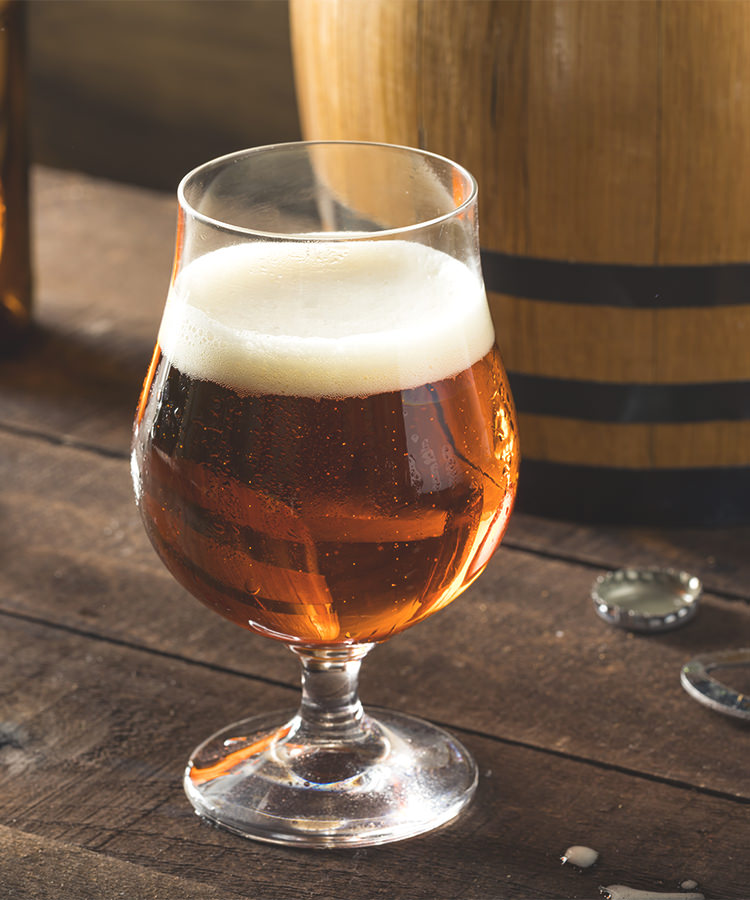The beer industry is no stranger to shortcuts. Money-conscious brewers rely on adjuncts like corn and rice, and enhance hop flavor with liquid hop extract. Now a sacred cow in craft beer — barrel-aged beer — is up for some corner cutting.
The Scottish brewery Innis & Gunn made an announcement on October 17 that all of its beer will once again be barrel aged after seven years of a barrel shortage. The only hitch is that the beers aren’t actually barrel-aged, they use a “barrel into beer method.” In other words, Innis & Gunn is just dumping in toasted wood chunks and saying it has the same impact as barrel aging.
“We have replaced oak chips with bourbon barrel or Jamaican rum barrel pieces which returns to our core range of beers back to being 100 percent barrel-aged,” founder Dougal Gunn Sharp said in a statement, according to The Drinks Business. “This is an unconventional method that turns the traditional process on its head to create more consistent barrel-aged beer without losing any of the rich depth of flavor.”
Sharp adds that using the “barrel in beer” technique “is no different” than the “traditional beer into barrel method.”
While it’s true that the beer picks up some barrel flavors from the process, it’s nothing like taking the time to actually let a beer rest in barrel.
Look at wine. Wood chips, staves, and even sawdust thrown into a wine cheapens the final product and tastes nothing like a properly barrel-aged wine. It’s a major factor in how big, “oaky” wines sell for under $15. Drinkers get the impression of oak without the actual impact of oak. It’s like adding artificial flavoring, making the flavors disjointed instead of natural. The flavors are out of wack, lacking the round and oxidative quality that barrel-aged wine (or in the Innis & Gunn case, beer) has.
Innis & Gunn can market these beers to the average consumer and, in large part, will get away with it because it’s a cheaper process. The brewery doesn’t have to pay for barrels or for the space to store them. The danger will come when other breweries start to widely copy the process, and consumers start to think that the disjointed taste from “barrel in beer” is the actual taste of barrel-aged beer.
In other words, it’s time to start checking the process behind your barrel-aged beers, folks.
Exercise and craft beer belong together
On October 21, I attended the Brew Hop 5K and Craft Beer Festival in New York. Full disclosure: I’m not a runner and probably would end up walking part of a 5K if I tried. I am, however, a beer drinker, and hanging out with runners made me realize that I need to get in shape.
And it turns out the craft beer community is a healthy lot. Tons of runners, still sweaty from the race, flocked to more than 13 craft beer tents ranging from Brooklyn Brewery to Sixpoint to Ommegang. They downed Kolshes and pale ales, stouts and semi-hazy IPAs like they were refreshing glasses of water. It’s weird to say it, but on that Saturday, craft beer inspired me to be healthier.
Regular drinkers have been getting more and more into fitness recently, and craft beer is leading the trend. Forbes published a story in April 2017 about “Seven Craft Beer and Running Races to Train for This Summer,” and if you Google “craft beer runs” a whole slew of options are available. It’s true with cocktails, too. Just look at the “Earn Your Booze” movement started by Elliott Clark.
Maybe I am just drinking the Kool-Aid, but if craft beer can add a bunch of jobs to the economy, taste delicious, and make us healthy, is there anything it can’t do?
Budweiser is going for nostalgia small batch beer
On October 23, Budweiser announced a new 1933 Repeal Reserve amber lager. Which means after all the advertisements mocking craft beer, Budweiser is going after those flavor-chasing drinkers and nostalgia-obsessed millennials.
Repeal Reserve comes from a recipe that Adolphus Busch made for friends and family before Prohibition. It didn’t survive the dry spell, until the company thought it’d be a good idea to bring it back nearly 100 years later with a Lyft partnership and vintage cars.
It’s stronger, darker, and has more alcohol. It’s Budweiser’s way of acknowledging that drinkers want something more these days, and that buying up beloved craft breweries isn’t the only way the company can satisfy drinkers. Regardless of what it tastes like, classic beer nostalgia (or, in this case, faux 1920s nostalgia) sells.
